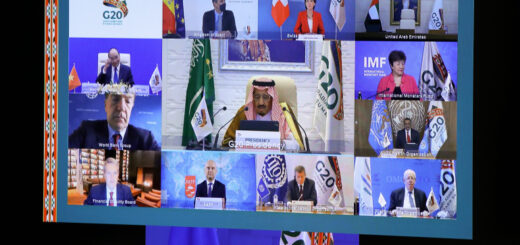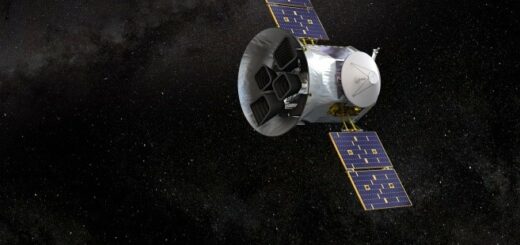National Current Affairs – UPSC/IAS Exams- 10th October 2019
NITI Aayog’s Water Resources Strategy
Topic: Resource Management
In News: The strategy for ‘water resources’ under NITI Aayog’s ‘Strategy for New India @75’ is criticized as unrealistic by various stakeholders as it didn’t make much difference in the water resource management till now.
More on the Topic:
- The document reiterates two ideas:
- Adopting an integrated river basin management approach: The integrated management concept has been around for 70 years, but not even one moderate size basin has been managed thus, in the world.
- Setting up of River Basin Organisations (RBOs) for major basins: Without analysing why the WRA already established has failed, it has recommended to establish Water Resources regulatory authorities. Recommendation is made without analysing why CAD works remain incomplete.
The goals mentioned in the document:
- Providing adequate and safe piped water supply.
- Providing water to all farms and industries.
- Ensuring continuous and clean flow in all the Indian rivers.
- Assuring long-term sustainability of groundwater.
- Safeguarding proper operation and maintenance of water infrastructure.
- Utilising surface water resources to the full potential of 690 billion cu.m.
- Improving on-farm water-use efficiency.
- Ensuring zero discharge of untreated effluents from industrial units.
Concerns:
- These are over ambitious and absurdly unrealistic for a 5-year window. Not even one of these goals has been achieved in any State.
- A strategy document didn’t specify who will be responsible and accountable for achieving the specific goals, and in what time-frame.
- This has resulted in no one accepting the responsibility to carry out various tasks.
- Ideas listed under ‘way forward’ and ‘suggested reforms’ do not say how any of these will come about.
- These are problems, caused by 72 years of mis-governance in the water sector, and remain challenges for the future.
Constraints achieving listed Goals:
- Irrigation potential created but not being used. Poor efficiency of irrigation systems and indiscriminate use of water in agriculture. Cropping patterns not aligned to agro-climatic zones.
- Poor implementation and maintenance of projects.
- The Easement Act, 1882 which grants groundwater ownership rights to landowners has resulted in uncontrolled extractions of groundwater.
- Citizens not getting piped water supply due to lack of co-ordination and political will.
- Contamination of groundwater is left unchecked and no efficient policy is formulated in this regard.
Way Ahead:
- India’s water problems can be solved with existing knowledge, technology and available funds.
- But India’s water establishment needs to admit that the strategy pursued so far has not worked. Only then can a realistic vision emerge.
- There is need to re-visit ground realities and re-doing the policy formulation according to the present challenges and context.
Effective strategic planning must satisfy three essential requirements.
- Acknowledge and analyse past failures.
- Suggest realistic and implementable goals.
- Stipulate who will do what, and within what time frame.
Source: Hindu
Automatic Exchange of Information (AEOI)
Topic: Bilateral, regional and global groupings and agreements
In News: Switzerland has shared bank account details with the Indian government under the AEOI (Automatic Exchange of Information) framework.
More on the Topic:
- The Federal tax administration (FDA) of Switzerland has exchanged account details information with 75 countries including India. This is the first time when Switzerland has shared financial details about the active and closed accounts during 2018 under the AEOI framework.
- AEOI Regime between Switzerland and India kicked off from September 1, 2019. Under this mechanism, India will start receiving information on all financial accounts held by Indian residents in Switzerland, for the year 2018.
- The step is likely to shed more light on the wealth Indians have stashed away in Swiss bank accounts, for so long governed by strict local rules of secrecy.
- In 2018, data from Zurich-based Swiss National Bank (SNB) had shown that after declining for three years, money parked by Indians in Swiss Banks rose 50 per cent to CHF (Swiss Franc) 1.02 billion (Rs 7,000 crore) in 2017 over the previous year.
About Automatic Exchange of Information (AEOI):
- Automatic Exchange of Information (AEOI) is systematic and periodic transmission of “bulk” taxpayer information by the source country to the residence country, which is possible under most of the Double Taxation Avoidance Agreements (DTAAs) and Multilateral Convention on Mutual Administrative Assistance in Tax Matters (MAC).
- It aims to reduce global tax evasion and is to be carried out under Common Reporting Standard (CRS) of OECD.
Source: The Hindu
Topic: Disaster Management
In News: The Union Minister of Earth Sciences has recently launched the Gagan Enabled Mariner’s Instrument for Navigation and Information (GEMINI) device.
More on the Topic:
- The device is developed for effective dissemination of emergency information and communication on Ocean States Forecast and mapping of Potential Fishing Zones (PFZ) to fishermen.
- Ocean States Forecast provides the accurate state of the ocean that includes the forecasts related to winds, waves, ocean currents, water temperature, etc.
- PFZ provide information about the probable locations of fish aggregation in the seas to the fishermen
- GEMINI is a portable receiver that is linked to ISRO-satellites. With this device, the fishermen outside the signal range of their phone companies (i.e. 10-12 km) can also access warnings and alerts, as the device can send signals up to 300 nautical miles.
- It will facilitate satellite-based communication that will be highly useful while dealing with cyclones, high waves, and tsunamis.
- Indian National Centre for Ocean Information Services (INCOIS) in collaboration with the Airports Authority of India (AAI) utilized the GAGAN (GPS Aided Geo Augmented Navigation) satellite while developing the GEMINI device.
- The drawback of this device is that it only allows one-way communication, i.e, it can’t be used by fishermen to make calls also, it is relatively expensive for the average fisherman (priced at ₹9,000 per device).
Mains Question: Vulnerability is an essential element for defining disaster impacts and its threat to people. How and in what ways can vulnerability to disasters be characterized? Discuss different types of vulnerability with reference to disasters.
Source: Hindu
Topic: Environment and Ecology
In News: Government is planning an ambitious 1400 km long and 5 km wide green belt from Gujarat to Delhi.
More on the Topic:
- The plan is inspired by Africa’s ‘Great Green Wall’ project, running from Senegal (West) to Djibouti (East), which came into effect in 2007.
- The overarching objective of India’s Green Wall will be to address the rising rates of land degradation and the eastward expansion of the Thar desert.
- The green belt being planned from Porbandar to Panipat will help in restoring degraded land through afforestation along the Aravali hill range. It will also act as a barrier for dust coming from the deserts in western India and Pakistan.
- The Aravali has been identified as one of the key degraded zones to be taken up for greening under India’s target to restore 26 million hectares (mha) of its land.
- A 2016 report from the Indian Space Research Organisation (ISRO) had also indicated that Delhi, Gujarat and Rajasthan had already degraded over 50% of their land.
Source: Times of India
Mahatma Gandhi National Fellowship (MGNF) programme
Topic: Government Policies
In News: Union Ministry of Skill Development and Entrepreneurship (MSDE) signed a contract with Indian Institute of Management (IIM) Bangalore for introducing a two-year fellowship programme called ‘Mahatma Gandhi National Fellowship (MGNF) programme’. The step is taken to boost skill development at the district level.
More on the Topic:
- MGNF is designed under Skills Acquisition and Knowledge Awareness for Livelihood Promotion (SANKALP).
- The programme aims to address challenge of non-availability of personnel for implementation of various programmes at national, state and district levels and create a cadre of young individuals and train them in a blended academic programme that provides both academic inputs and a component of field immersion at district level.
- It has has an in-built component of on-ground practical experience with district administration.
- Eligibility of fellows for Programme: Age group has to be in 21-30 years age-group and must be citizens of India. They must have a graduation degree from a recognized university and also proficiency in official language of state of fieldwork will be mandatory.
Source: PIB
Topic: Science and Technology
In News: The 2019 Nobel Prize in Chemistry will be awarded to John D. Goodenough, M. Stanley Whittingham and Akira Yoshino for the development of lithium-ion batteries.
More on the Topic:
- Lithium-ion batteries have revolutionised our lives and are used in everything from mobile phones to laptops and electric vehicles.
- In the early 1970s, Whittingham used lithium’s enormous drive to release its outer electron when he developed the first functional lithium battery. Dr. Goodenough doubled the lithium battery’s potential, creating the right conditions for a vastly more powerful and useful battery.
- Yoshino succeeded in eliminating pure lithium from the battery, instead basing it wholly on lithium ions, which are safer than pure lithium. This made the battery workable in practice.
- The result was a lightweight, hardwearing battery that could be charged hundreds of times before its performance deteriorated.
- The advantage of lithium-ion batteries is that they are not based upon chemical reactions that break down the electrodes, but upon lithium ions flowing back and forth between the anode and cathode.
Source: Indian Express
Topic: Science and Technology
In News: First of 36 Rafale Fighter Jets Delivered to India by France.
More on the Topic:
- Rafale is a Medium Multi-Role Combat Aircraft (MMRCA).
- It is a French-origin Delta winged, twin-engine multirole fighter aircraft manufactured and designed by Dassault Aviation.
- The engines push the Rafale to attain a high speed of 1.8 Mach (1912 kmph) and a range of more than 3700 km with 3 drop tanks.
Source: Hindu


















